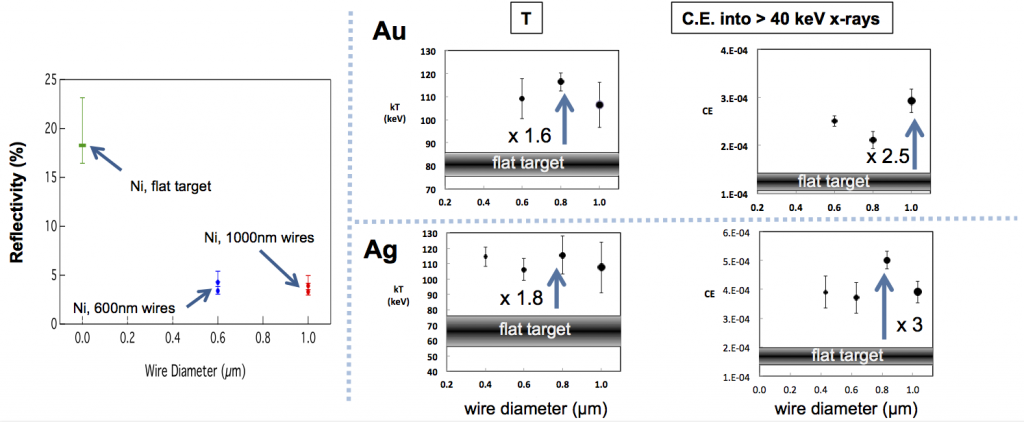Riccardo Tommasini (15-ERD-054)
Abstract
The creation and investigation of high-energy-density matter opens the route to important applications ranging from material processing to remote target destruction to creating conditions for nuclear fusion. We plan to generate and study matter in extreme conditions by irradiating targets of nanometer-scale wire arrays with the high-energy (up to 100 J) short pulses (less than 1 ps) from Lawrence Livermore's Titan laser. Our study extends by two orders of magnitude in energy the recent experiments conducted at Colorado State University and will allow us to achieve regimes where matter is concomitantly at temperatures at or above tens of kiloelectronvolts with ion densities approaching solid, leading to pressures as high as 500 Gbar. This region is appropriately named ultrahot dense matter. Our project will also allow us to efficiently convert the laser light into picosecond x-ray pulses with unprecedented efficiency.
We expect to achieve energy densities of about 50 GJ/cm3, bulk electron temperatures in excess of 100 keV, and pressures at the nanowire centers of about 500 Gbar, exceeding those in the Sun's core. We will also generate compact multiple-kiloelectronvolt x-ray sources with efficiencies exceeding 50%. We will diagnose the temperature, ionization states, and radiation spectra of the Coulomb explosion of nanowires and study their nonlocal thermodynamic-equilibrium physics and opacities, along with radiation absorption by dense nanostructures and plasma kinetics. The experiments will be designed and analyzed using numerical simulations relying on specific LLNL capabilities. In addition, we anticipate the demonstration of ultrahigh-dense-matter principles and development of a high-brightness picosecond x-ray source.
Mission Relevance
This project will enable the generation and study of ultrahigh-energy-density physics and the creation of ultrabright picosecond x-ray sources, contributing to the Laboratory's high-energy-density science core competency. As such, the project is relevant to the study of materials under extreme conditions and the stockpile stewardship science strategic focus area, and therefore, ultimately, to the nation's defense mission. It also contributes to the Laboratory's inertial fusion science and technology focus area, and is applicable to the fields of technology and engineering of nanostructure fabrication.
FY15 Accomplishments and Results
In FY15 we (1) built more than 80 targets using gold nanowires, with diameters ranging from 400 to 1,200 nm, for irradiation with Titan laser pulses; (2) refined our analytical scaling model for optimizing the target design according to available laser parameters; (3) conducted numerical simulations to optimize the targets using a three-dimensional electromagnetic relativistic particle-in-cell (PIC) code, the multiphysics HYDRA radiation-hydrodynamics code, and the statistical equilibrium radiative-transfer RADEX code; (4) prepared silver, nickel, and palladium targets as well as planar (flat) targets to compare to the nanowire targets; (5) finalized the suite of diagnostics to be fielded in the Titan target chamber as well as the experimental layout; and (6) irradiated the targets at Titan during four weeks of experiments.






